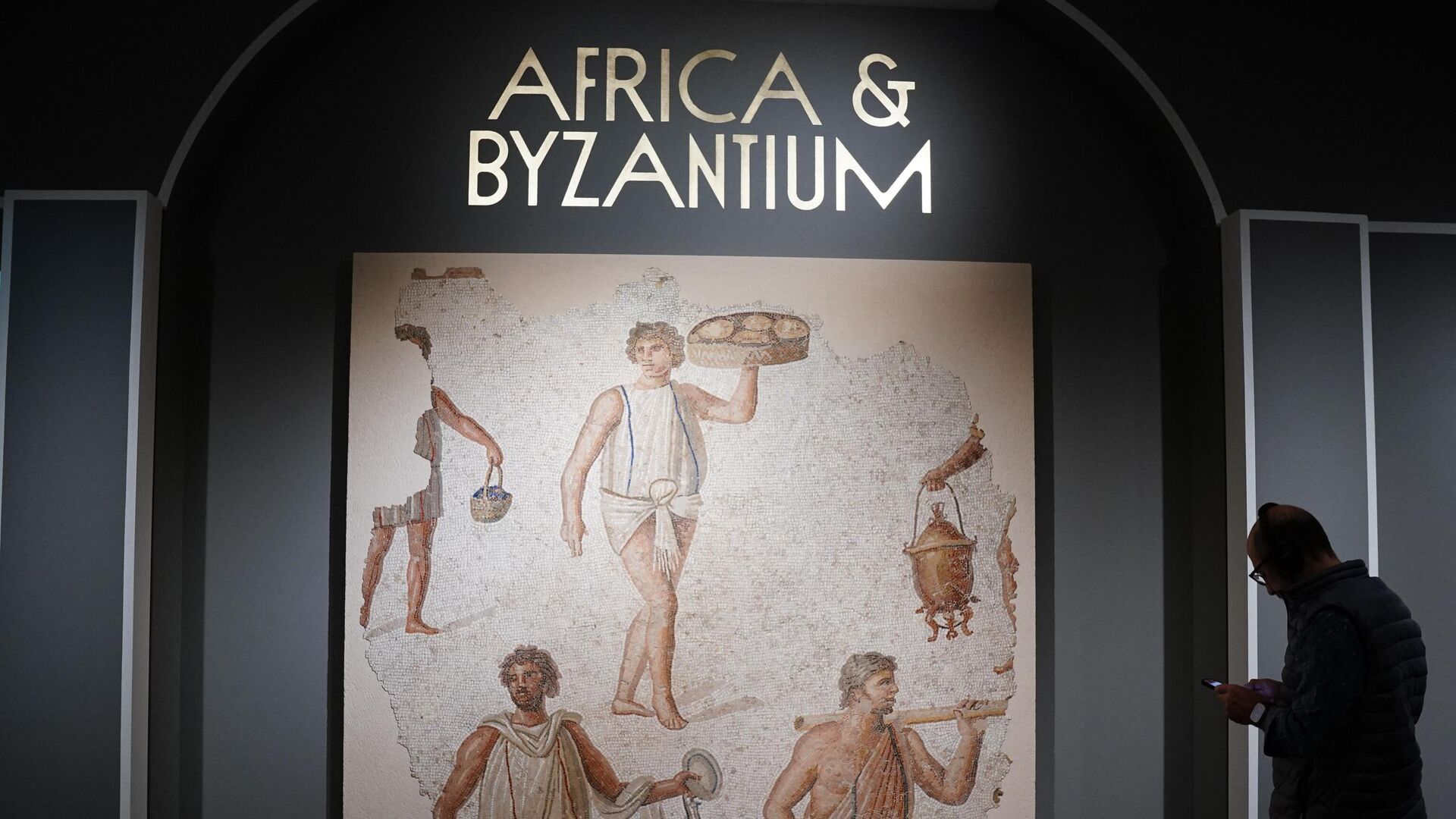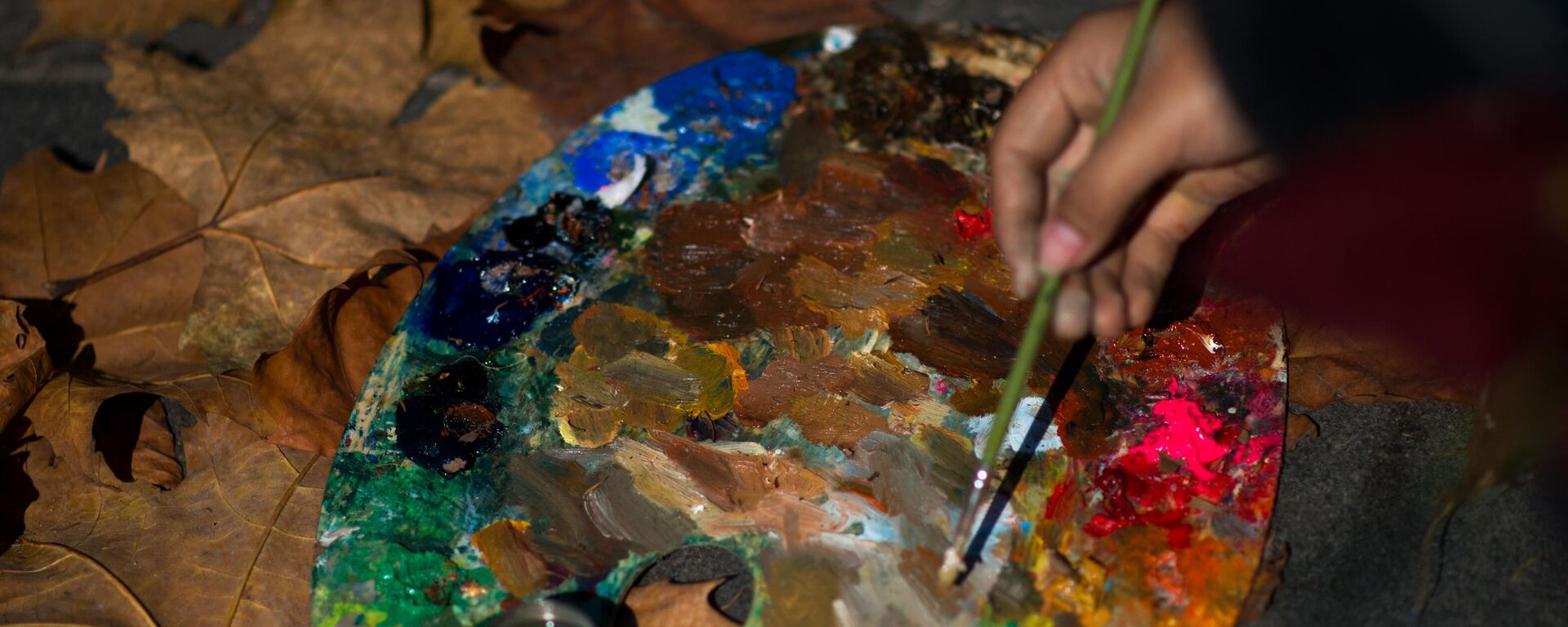https://en.sputniknews.africa/20231119/new-york-metropolitan-museum-presents-1000-years-of-byzantine-influence-on-christian-african-art-1063643963.html
New York Metropolitan Museum Presents 1,000 Years of Byzantine Influence on Christian African Art
New York Metropolitan Museum Presents 1,000 Years of Byzantine Influence on Christian African Art
Sputnik Africa
Mosaics, paintings, jewelry, ceramics, manuscripts from the 4th to the 15th century: the Metropolitan Museum of Art in New York is showing 200 ancient and... 19.11.2023, Sputnik Africa
2023-11-19T11:09+0100
2023-11-19T11:09+0100
2024-04-25T10:22+0200
new york
egypt
tunisia
north africa
united states (us)
international
art
culture
painting
history
https://cdn1.img.sputniknews.africa/img/07e7/0b/13/1063644077_0:0:3072:1728_1920x0_80_0_0_e9f358bc99f9680dfe845b4aee9ed23d.jpg
One of the wealthiest in the world, the museum has brought together gems from collections from Africa, Asia and Europe for an exhibition called "Africa & Byzantium," from Sunday until next March. The Met presented a preview this week to a few journalists with its partners, the Egyptian and Tunisian governments and the oldest Coptic Orthodox monastery in the world, Egypt's Saint Catherine of Sinai. Bringing together artistic, religious, literary and archaeological treasures, "Africa & Byzantium" shows the impact of the Byzantine Empire from its capital Constantinople – which was formerly Byzantium and is now called Istanbul – on Christianity, which spread in the Horn of Africa from the 4th to the 7th centuries. Visitors will be able to view painted manuscripts, textiles, marble mosaics, carved ivories from Nubia, gold jewelry from Egypt, wall paintings – many of them appearing part for the first time in the United States. The pieces explore the links between cultural and multi-faith communities from the Mediterranean to the Red Sea, mixing Greek, Roman, Byzantine, Christian and Jewish traditions, the Met said. Archbishop Damianos, from Saint Catherine of Sinai, praised the exhibition, saying it "provides us with the opportunity to recall the universality of Byzantium, which is a proposal for freedom, unity, reconciliation, respect and peace, the peace that is so needed in our world today."
https://en.sputniknews.africa/20231025/international-artists-day-5-african-artists-you-should-know-1063079026.html
new york
egypt
tunisia
north africa
united states (us)
ancient egypt
Sputnik Africa
feedback@sputniknews.com
+74956456601
MIA „Rossiya Segodnya“
2023
Agence France Presse (AFP)
Agence France Presse (AFP)
News
en_EN
Sputnik Africa
feedback@sputniknews.com
+74956456601
MIA „Rossiya Segodnya“
Sputnik Africa
feedback@sputniknews.com
+74956456601
MIA „Rossiya Segodnya“
Agence France Presse (AFP)
new york, egypt, tunisia, north africa, united states (us), international, art, culture, painting, history, ancient egypt
new york, egypt, tunisia, north africa, united states (us), international, art, culture, painting, history, ancient egypt
New York Metropolitan Museum Presents 1,000 Years of Byzantine Influence on Christian African Art
11:09 19.11.2023 (Updated: 10:22 25.04.2024) Agence France Presse (AFP)
Mosaics, paintings, jewelry, ceramics, manuscripts from the 4th to the 15th century: the Metropolitan Museum of Art in New York is showing 200 ancient and medieval works that reflect a thousand years of influence of the Byzantine Empire on the Christian communities of Egypt, Tunisia and Ethiopia.
One of the wealthiest in the world, the museum has brought together gems from collections from Africa, Asia and Europe for an exhibition called "Africa & Byzantium," from Sunday until next March.
The Met presented a preview this week to a few journalists with its partners, the Egyptian and Tunisian governments and the oldest Coptic Orthodox monastery in the world, Egypt's Saint Catherine of Sinai.
Bringing together artistic, religious,
literary and archaeological treasures, "Africa & Byzantium" shows the impact of the Byzantine Empire from its capital Constantinople – which was formerly Byzantium and is now called Istanbul – on Christianity, which spread in the Horn of Africa from the 4th to the 7th centuries.
The exhibit "brings new focus and scholarship to an understudied field, expanding our knowledge of Byzantine and Early Christian Art within an expansive
worldview," stated Met CEO Max Hollein.
Visitors will be able to view painted manuscripts, textiles, marble mosaics, carved ivories from Nubia, gold jewelry from Egypt, wall
paintings – many of them appearing part for the first time in the United States.
The pieces explore the links between cultural and multi-faith communities from the Mediterranean to the Red Sea, mixing Greek, Roman, Byzantine, Christian and Jewish traditions, the Met said.
"Rich cultural heritage that is the result of a mix of different civilizations that have occupied the Mediterranean" along with a "local African foundation," Tunisian Cultural Affairs Minister Hayet Guettat Guermazi told AFP.
Archbishop Damianos, from Saint Catherine of Sinai, praised the exhibition, saying it "provides us with the opportunity to recall the universality of Byzantium, which is a proposal for freedom, unity, reconciliation, respect and peace, the peace that is so needed in our world today."


